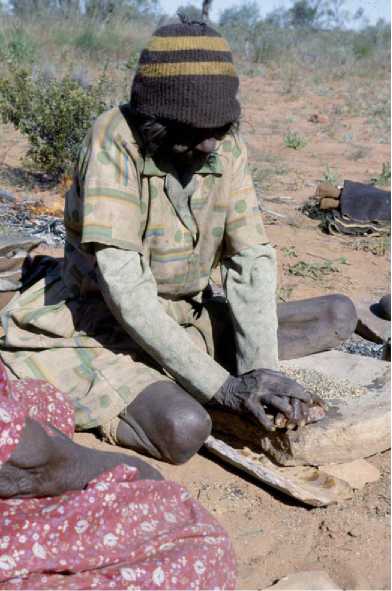The flaked and ground stone tool technologies of the Holocene show marked variation in style and form as seen in the Kartan Industry (first identified on Kangaroo Island) and Gambieran sequences (from the Mt Gambier Region) from the southern regions of the continent. However it is from the mid-Holocene (c. 5 ka) that marked changes are observed in the stone tool assemblages from mainland Australia both in implement types and manufacturing techniques. They are considerably physically smaller and have commonly been referred to as the Australian Small Tool Tradition. Ground edge hatchets, micro-liths or backed artifacts, spear points, drills, and other items became common in artifact assemblages from this period. Distributions of tool types also varies with tula adzes (a hafted woodworking tool) being primarily confined to the more arid areas of the continent, unifacial and bifacial points concentrated mostly in the north of the continent but also found down through the center. Kimberley points are bifacially flaked from fine-grained siliceous materials such as quartzite or silcrete using pressure flaking. They vary in length, the longest being around 10 cm long though they are usually about half this size. Bifacially flaked points are restricted to the north and variations on these points (e. g., Pirri points) can be found down through the center of the continent. Microliths come mainly from the southern areas. While microliths seem to peak in production around 2-3 ka, they decline in use around 1 ka in many of the east coast sites. The primary function of microliths has never been clearly established though they were probably used as armatures in composite spears and knives. Grindstones are ubiquitous in the arid/semi-arid areas where they were used mainly for processing grass seeds, Nardoo (a small freshwater fern with starchy sporocarps), and perhaps some Eucalyptus and Acacia species (Figure 8). Grindstones have also been recovered from more temperate regions though their functions may vary according to resource availability (see Lithics: Analysis, Use Wear).
Two zones which are thought to have had barriers to permanent settlement are the arid zone and the rainforests. Both were colonized at vastly different times but permanent occupation of both may have been constrained by similar problems - access to resources and climatic fluctuations. In the case of the arid zone access to carbohydrates, in the form of grass seeds, may have limited occupation as their exploitation involved a high-energy input/low-energy return. In the rainforest, permanent settlement may have been controlled by access to toxic starchy nuts which were a high-energy input, high-energy return food item.

Figure 8 Anmatyerre woman grinding acacia seeds, Utopia, June 1983. Photograph © M. A. Smith.




 World History
World History









